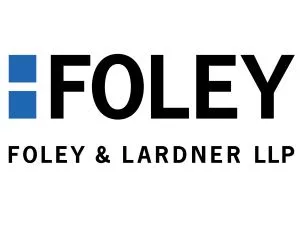- within Coronavirus (COVID-19), Insurance, Government and Public Sector topic(s)
Executive Summary
Like any other part of the manufacturing sector, auto suppliers face a number of challenges complying with environmental regulatory requirements, in particular managing and monitoring development of greenhouse gas emissions limits in the United States, European Union, and elsewhere, and chemical and hazardous waste management and disposal requirements that directly impact the sector. Unlike other industrial sectors, auto parts manufacturers face unique environmental pressures from OEMs and competitors to develop and maintain certain environmental practices such as "sustainability" programs, targeted waste reductions, and policing of the supply chain for particular hazardous materials.
1. SUSTAINABILITY
Sustainability remains an aspirational concept with widely varying benchmarks for implementation and achievement. Nevertheless, the race to declare one's supply chain as "sustainable" or "most green" is keen. Achieving sustainability benchmarks that satisfy OEM requirements, support consumer advertising "green" claims, and comply with developing regulatory standards is no easy task. Making sure that selfimposed "sustainability" requirements are consistently achievable and accurate is also not without regulatory risk. In many cases, achieving "sustainability" requires some degree of documentation and disclosure of environmental management that may not always be favorable. Therefore, the development and management of any sustainability initiative requires regulatory vigilance and honest self-evaluation in an ever-changing regulatory landscape.
2. SUPPLY CHAIN CERTIFICATION REQUIREMENTS
Auto suppliers face a myriad of challenges maintaining extra-regulatory compliance with contractual clauses requiring that they certify manufactured parts as "asbestos-free," "lead-paint-free," "chromium-free," free of so-called "blood minerals," and so forth. This can be particularly challenging where parts are made in jurisdictions with loose regulatory standards or enforcement and are then shipped for assembly in countries with more exacting standards. Failing to properly police such requirements exposes parts suppliers not just to regulatory enforcement in a variety of jurisdictions but the perhaps greater risk of economic damages from customer claims and recall liability.
3. REGULATORY COMPLIANCE
Navigating various regulatory requirements remains challenging for parts suppliers whose products end up in jurisdictions with a crazy-quilt set of environmental standards. From the continuing requirements of the EU REACH programme to the evolving greenhouse gas emissions requirements in the European Union and elsewhere, the challenge of monitoring and then implementing effective compliance programs is ongoing.
4. LEGACY ENVIRONMENTAL CLEANUP LIABILITY
For the many suppliers and their successors who have emerged from bankruptcy or other corporate reorganization, planning for potential legacy environmental cleanup liabilities requires continued close monitoring of U.S. court cases. Recent case law both in the bankruptcy context (e.g., In re Bos. & Me. Corp. 2013 BL 264416, (D. Mass.)) and those relating to liability apportionment post Burlington Northern have particular relevance to the auto industry and legacy suppliers and will no doubt continue to evolve in 2014.
The content of this article is intended to provide a general guide to the subject matter. Specialist advice should be sought about your specific circumstances.



